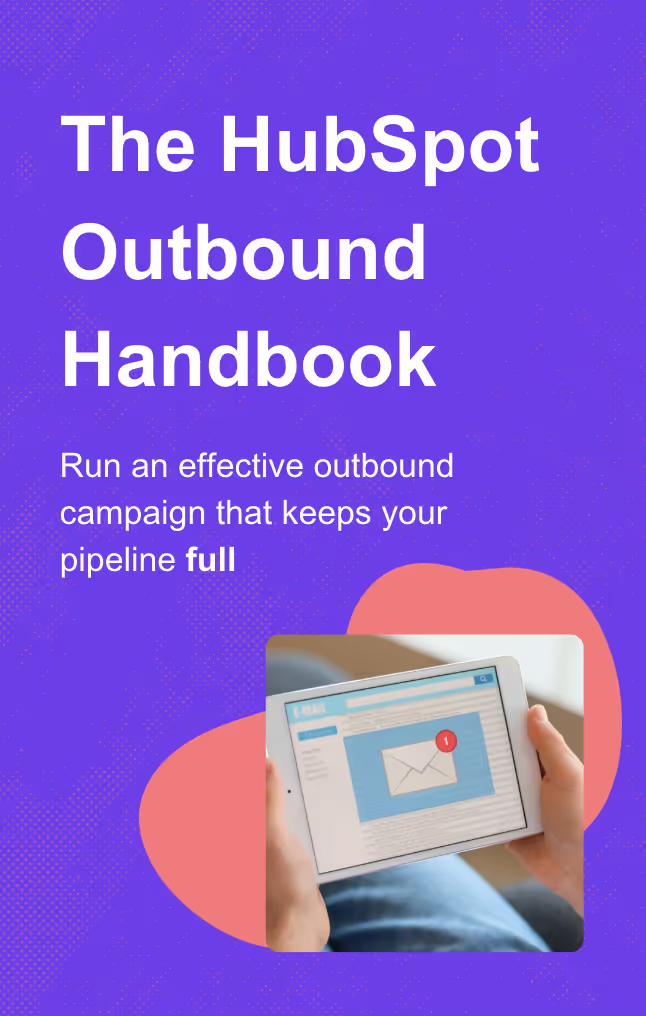The practical guide to HubSpot sales automation
HubSpot is a great CRM, but its true power lies in automation. Learn how to automate your sales process to streamline your pipeline.
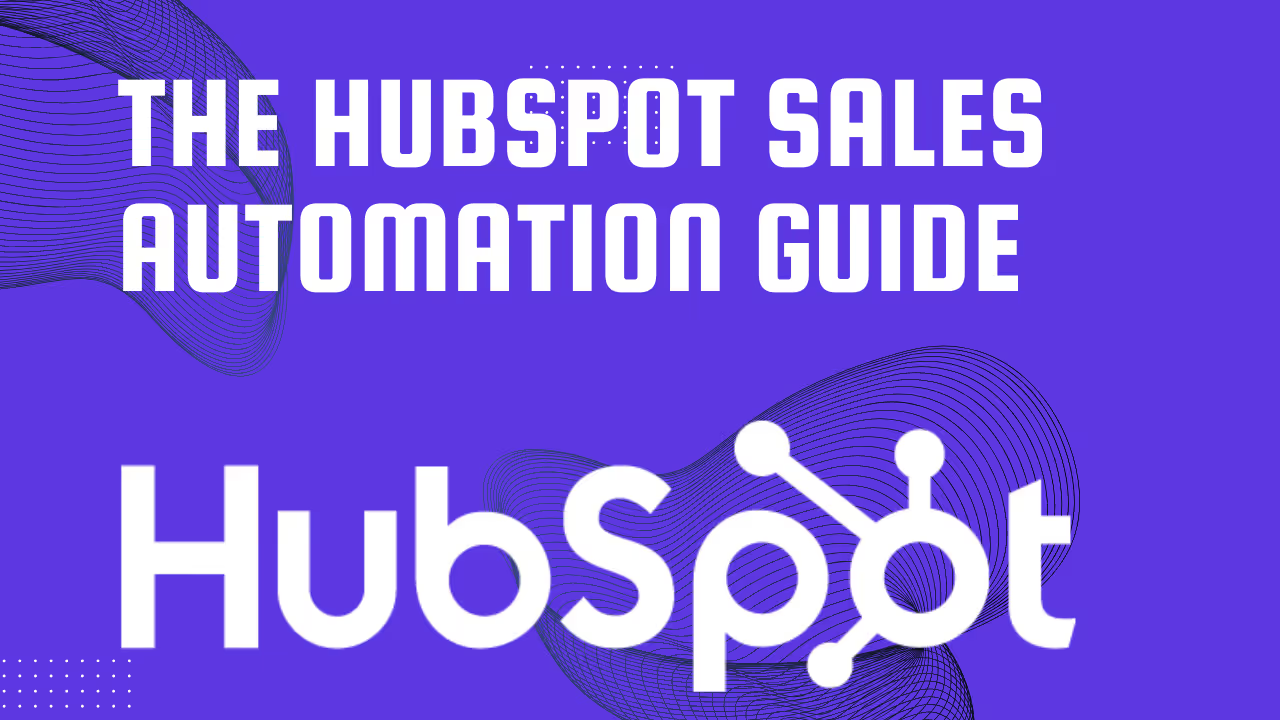
As great a CRM as HubSpot is (and trust me, it’s excellent), it can’t do everything for you.
Sure, you can easily segment and prioritize leads, nurture and engage with prospects at scale, and close deals… but YOU need to do that. That takes time. That means spending time learning the ins and outs of HubSpot and maintaining your CRM.
I’ve yet to meet a sales rep with hours to spare for that.
Fortunately, HubSpot comes packed with features that can automate almost every part of your sales funnel. From identifying your best opportunities to nurturing cold leads into red-hot deals, you can automate it all. Read on as I share how we use HubSpot to scale outbound sales at Hublead.
Benefits of sales automation in HubSpot
Before we get to the specifics, why is automation worth the effort? After all, can’t you simply remember to send those follow-ups or segment your list?
You could… but with a few hours of setup and testing, you can save hundreds of hours later on. That means a lot more time prospecting and filling your pipeline.
Here are the top benefits I’ve found in leveraging HubSpot’s automation features:
- Streamline your pipeline: The obvious benefit is that automation saves you time. I’d estimate you can save 10% or more each week by using HubSpot to nurture contacts, enrich leads, and import contacts from LinkedIn. By using HubSpot to work smarter and not harder, you can move prospects through the sales funnel faster.
- Shorten sales cycles: Tired of waiting for months on end to close deals? Automate! Sequences and Workflows can help here to automate follow-ups and check-ins. This frees you up from the manual work of remembering which opportunities to move along while closing them faster.
- Improve close rates: Teams that insist on doing everything themselves inevitably let high-value opportunities slip through the cracks. You can’t control every prospect you’re pursuing, but with automation, you can ensure you don’t let your best opportunities fall by the wayside.
- Boost productivity: Do you really want to spend your time on busywork and manual to-dos? Didn’t think so. CRM cleanup and the like are wastes of time for sales reps, but they're necessary to keep your data up to date and your manager informed. HubSpot can automate this too, removing busywork from your plate and freeing up time.
Next, I’ll share step-by-step examples of what you can automate inside HubSpot.
What can you automate in HubSpot?
HubSpot is a blank canvas; there’s so much you can do that it can quickly feel overwhelming.
To help you, here are my favorite things to automate in HubSpot:
- Prospecting with Sequences
- Nurturing with Workflows
- Prioritization Lead scoring
- To-dos with Tasks
- Meeting scheduling
I’ll show you exactly how to do the above in the following sections.
Prospecting with Sequences
HubSpot Sequences are going to be your best friend when it comes to engaging with prospects.
Sequences allow you to send a set of personalized pre-scheduled emails to prospects so you can focus on higher-value tasks.
HubSpot Sequences can be used to:
- Send automated nurturing emails
- Create tasks
- Set a reminder to send LinkedIn InMails
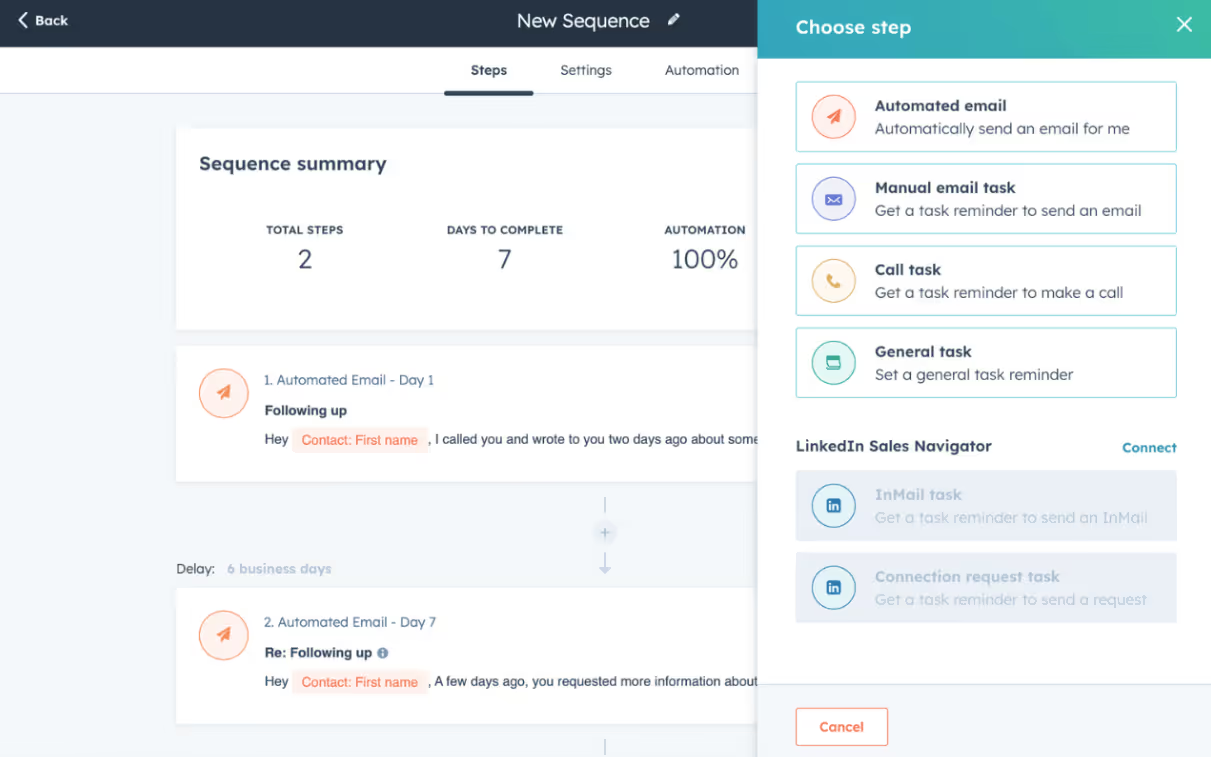
Here are some of my favorite types of Sequences to send:
- Post-demo follow-up: Send an email series to a prospect after demoing. This sequence typically starts with a thank-you email outlining the next steps, followed by a series of emails that provide additional resources to encourage engagement.
- Proposal follow-up: Once a proposal has been sent, I like to follow up with a sequence to reaffirm your interest in working with the prospect. This ensures they have all the information they need to make a decision (which, hopefully, is to agree and sign).
- Engage during the decision phase: As prospects decide to move forward, you may be tempted to sit and wait. Don’t. Guide prospects to a close with an engagement sequence during the decision-making phase. This keeps the line of communication open and interest high.
Those are three of my favorites, but you can check out the rest in my 10 favorite HubSpot Sequences with examples! Keep reading for more HubSpot automation ideas.
Nurturing with Workflows
After Sequences, HubSpot’s Workflows are my favorite tool to automate nurturing and processes. HubSpot Workflows can be used to send emails, create tasks, and update property values.
Wait… are they really that different from Sequences? It’s a fair question.
I like to think of Sequences as hyper-focused on sales nurturing, and Workflows as a way to automate sales and marketing nurturing while also supporting more robust features like automated enrollment, goals, and branching logic.
Check out this table for a full breakdown:
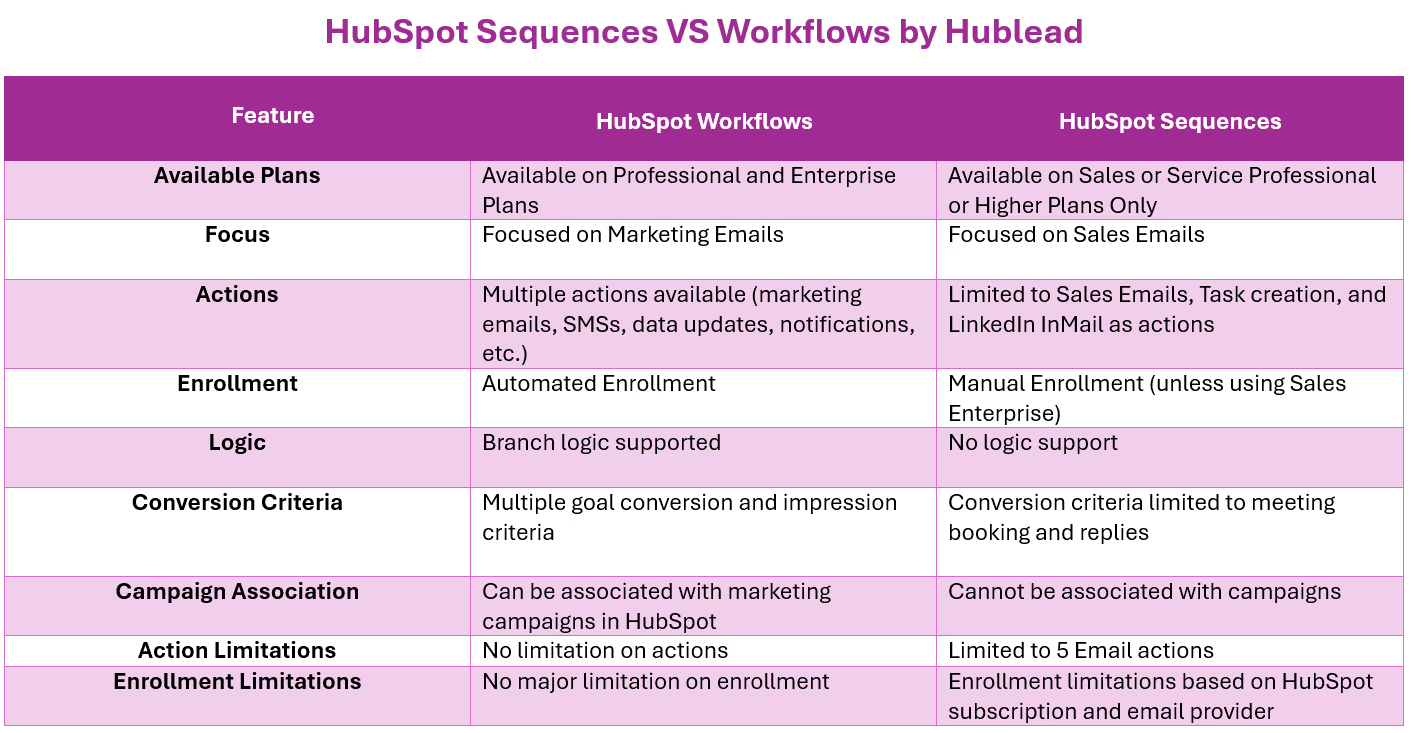
So, when can Workflows help automate your sales process?
- Enroll contacts based on website or LinkedIn activity: Unlike Sequences, which require manual enrollment, Workflows can automatically enroll contacts. You can enroll contacts who viewed your pricing or demo page and did not book, for example. Or, if you’re connecting HubSpot and LinkedIn with a tool like Hublead, you can even trigger Workflows based on synced LinkedIn activities.
- Send hyper-personalized marketing emails: Workflows allow you to send HubSpot marketing emails and plaintext emails, benefiting from HubSpot’s powerful personalization features.
- Automate even more tasks: Sequences allow you to send a maximum of five emails per Sequence, while Workflows can allow for a lot more with complex branching logic.
Check out our guide to using HubSpot Workflows to automate nurturing and sales for more information!
Prioritization with Lead Scoring
Sequences and Workflows are all well and good, but you still need to ensure you enroll the right prospects into them to get results. That means knowing who your highest-value prospects are.
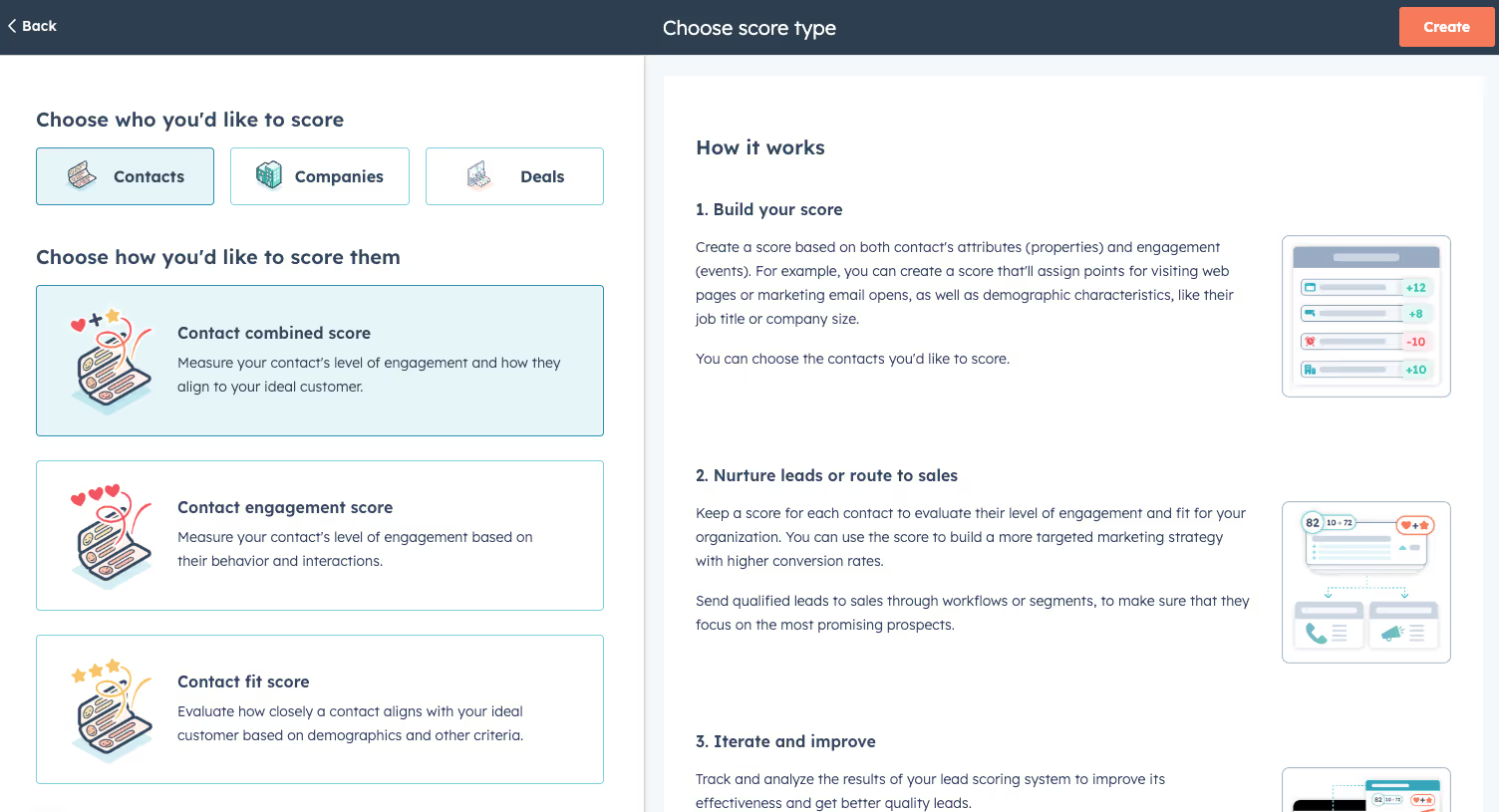
Lead status is helpful if you want to do this manually, but to really level up your lead prioritization, I recommend using HubSpot’s lead scoring. Lead scoring gives you a way to prioritize contacts based on their likelihood of converting into paying customers.
Lead scoring does this by weighting activities that a prospect takes to gauge how interested they are in your company. This allows you to prioritize prospects and respond appropriately, increasing your conversion rates in the process.
To do that, lead scoring takes the following buckets into consideration:
- Contact information: Information about your prospect, like demographics and role.
- Interaction and behavior: Interaction with your website and outreach efforts.
- Negatives: Factors that detract from a good opportunity.
Check out the graphic below for a deeper look at each of these pillars:
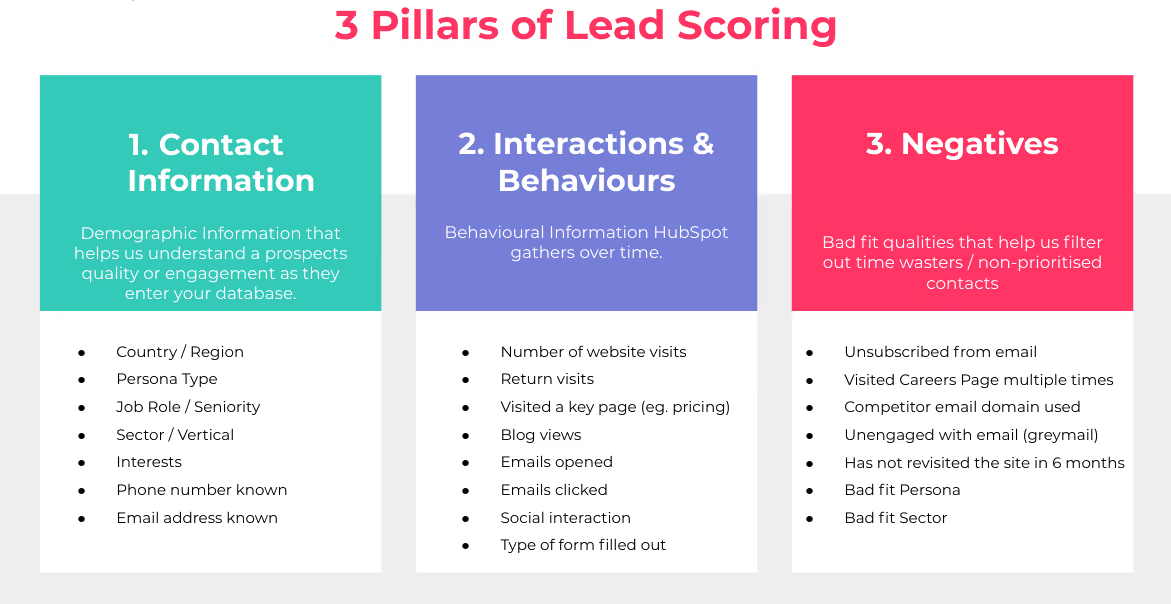
There are two approaches to lead scoring in HubSpot:
- Manual lead scoring: Manual lead scoring in HubSpot allows for a customizable model based on your criteria. This requires collaboration between marketing and sales to choose the right attributes.
- Predictive lead scoring: Predictive lead scoring uses AI and machine learning models to analyze hundreds of data points, automating the lead prioritization process. This takes in data from past customers and current prospects to identify patterns and predict the conversion probability for future leads.
In HubSpot, manual lead scoring corresponds to the HubSpot Score property while predictive lead scoring corresponds to the Likelihood to Close property.
You can edit both to add positive and negative attributes to fine-tune your score and properly segment prospects.
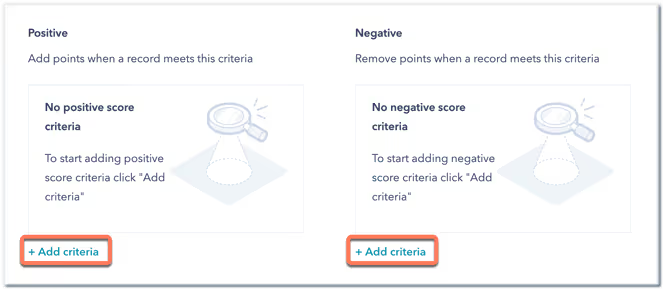
Check out our guide to lead scoring for a full walkthrough of this!
To-dos with Tasks
Tasks on their own are a great way to stay organized and line up your prospecting activities, but I like to level Tasks up by integrating them with the above tools.
In HubSpot, you can create tasks as reminders to:
- Email a prospect
- Schedule a meeting
- Call a prospect
- Reach out on LinkedIn
You can organize tasks in a queue to knock them out all at once, or use them to set reminders throughout the week to stay on top of your best opportunities.
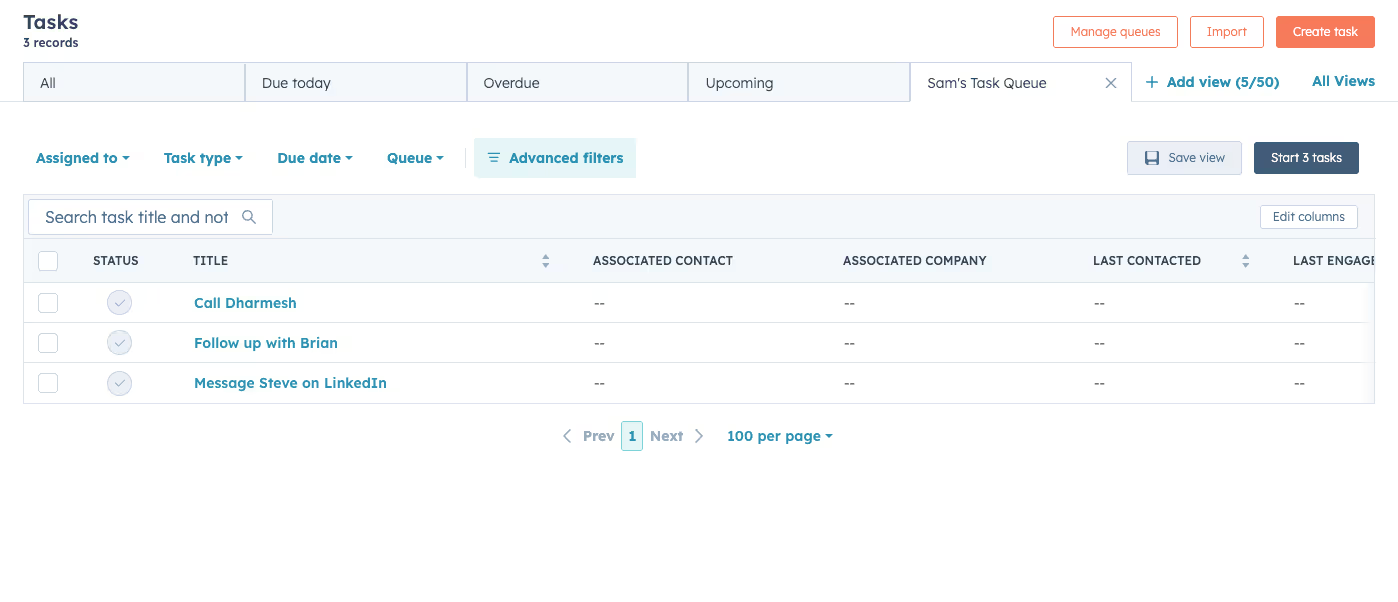
By using Sequences and Workflows to create tasks, you can dynamically build your prospecting to-do list based on actual contact activity. This allows you to proactively plan who you will reach out to and react based on their activity.
Timely outreach is one of the keys to sales success, and integrating tasks into your workflow allows you to stay on top of prospects and follow up when you’re most likely to be effective.
Meeting scheduling
Friction will kill your sales process, and nothing causes friction like finding a time to meet.
The HubSpot Meeting Scheduler is a built-in sales tool that automates the appointment booking process, connecting seamlessly to your existing calendar. By eliminating back-and-forth emails, the meetings tool helps prospects find time and schedule meetings.
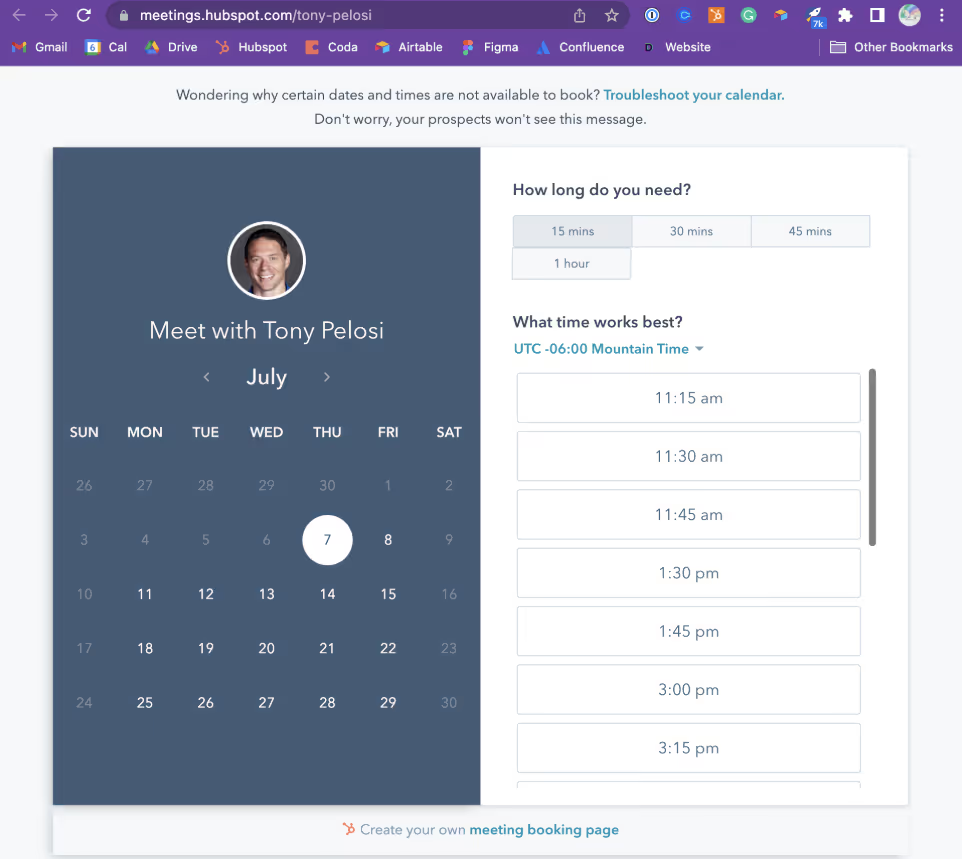
This can save hours spent trying to find a time to meet and create a better experience for the prospects you’re scheduling time with. There are a few powerful ways to leverage this even further, though:
- Sync with your calendar tools to make scheduling calls even more efficient.
- Remember Workflows from above? Leverage those to update CRM records, assign tasks, or trigger alerts for your team. You can also run post-meeting automations for more nurturing.
- Embed your meeting link in your email signature so anyone you email can book you straight away.
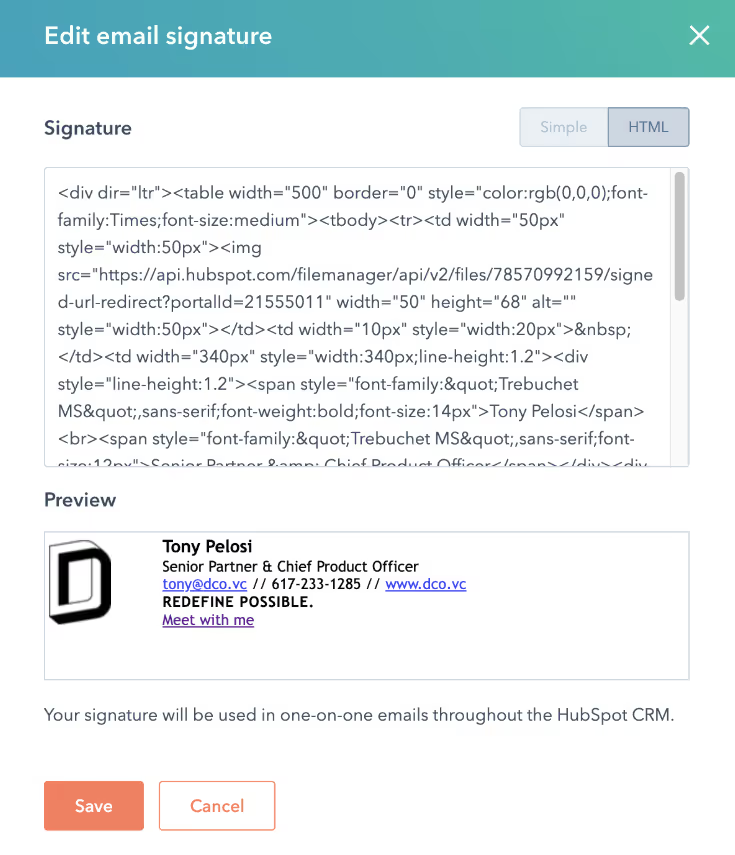
Learn all about the HubSpot meetings tool in our guide.
HubSpot sales automation best practices
I’m sure you’re ready to get your hands dirty and start automating as much as possible inside HubSpot. Before you dive headfirst into this, here are a few best practices to guide you:
- Plan in advance: Take a few minutes to step away from the screen to think. Automating without planning might feel productive, but you’ll usually end up automating the wrong things and wasting even more time. Audit the work that you do and find opportunities to automate.
- Start small, then scale: While the thought of automating your entire workflow may seem exciting, I recommend starting small and scaling up. Look for the low-hanging fruit first, and then let your automation strategy become more advanced once you have a handle on it and a clear ROI. Otherwise, you risk building something more complicated than it's worth.
- Test everything before launching: Always, and I mean always, test before launching. The last thing you need is a Workflow going wrong and letting valuable prospects slip through the cracks, or worse, killing opportunities before they come to fruition.
By starting small and taking an iterative approach, you can chip away at that busywork clogging up your schedule and become a prospecting and closing machine for your team with HubSpot.
Level up your sales process in HubSpot with the HubSpot Outbound Handbook
Automation can be a massive time-saver for your team… or a time suck if you do it wrong.
By taking time to audit your workflows, scaling as you go along, and testing as you go, you can carve out hours from each week, which means more time spent prospecting and closing.
Automation is one piece of the prospecting puzzle: you still need to know how to choose, prioritize, and message prospects to get their attention and convince them to close. For that, check out the HubSpot Outbound Handbook, our playbook for using HubSpot to run effective outbound campaigns that fill pipelines and close deals.
This playbook will give you everything you need to build an outbound machine inside HubSpot, and thanks to this guide, you can automate it too.
Frequently asked questions
What sales automation tools does HubSpot have?
HubSpot offers a few automation tools across its tiers. You can use Sequences to schedule a preset series of emails and Workflows to send emails, update contact properties, or even perform custom actions. Beyond that, HubSpot’s AI tools can help automate tasks by identifying website visitors with Buyer intent or generating content.
Which HubSpot tiers offer automation?
Typically, you will need a Pro or Enterprise subscription to access automation features. Workflows are available with Marketing Pro and Enterprise, while Sequences are available in Sales Pro and Enterprise.
Are there LinkedIn automation tools that integrate with HubSpot?
Yes! Tools like Hublead can integrate HubSpot with LinkedIn, allowing you to import and deduplicate contacts, enrich leads with email addresses and phone numbers, and sync messages straight to the contact record. You can try Hublead for free here!
